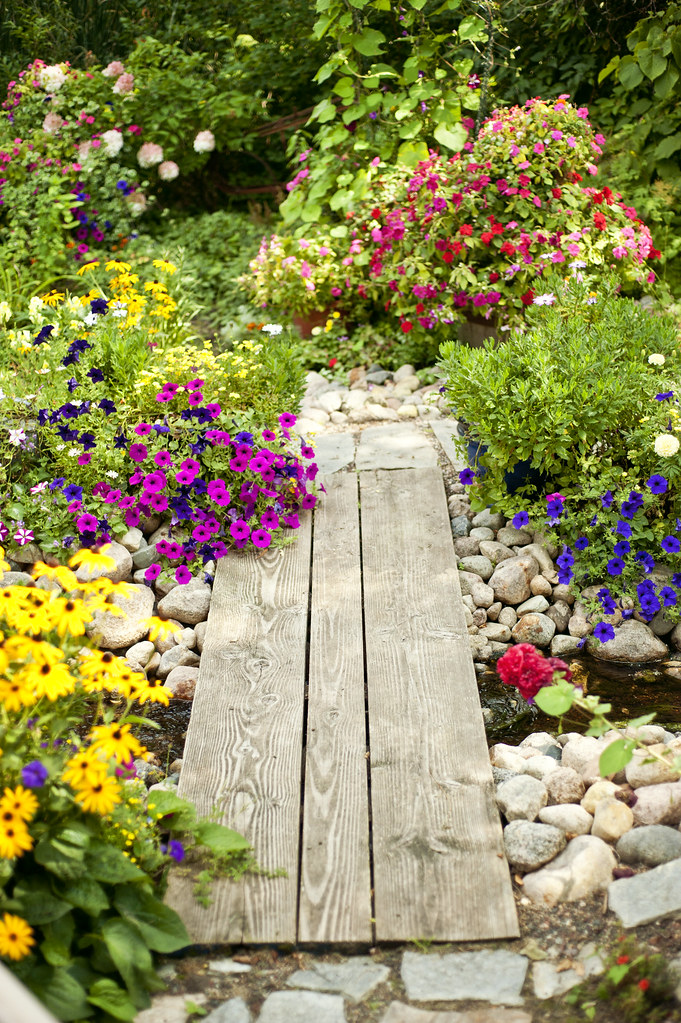
Creating a home garden is undoubtedly one of the most fulfilling and enriching experiences anyone can undertake. Whether you envision a sprawling backyard sanctuary, a vibrant display on a modest patio, or merely a collection of herbs thriving on a sunny windowsill, the journey of setting up a garden brings life, color, and often, fresh produce directly to your doorstep. It’s an endeavor that nourishes both body and soul, offering a peaceful retreat from daily pressures and the immense satisfaction of cultivating your own green space.
While the prospect of establishing a flourishing garden might seem daunting at first, particularly for beginners who may perceive it as a costly or time-consuming undertaking, it doesn’t have to be. With thoughtful planning, resourceful execution, and a clear vision from the outset, a successful garden is well within reach without sacrificing too much time or breaking the bank. The secret lies in a systematic approach, ensuring each step builds upon the last to create a harmonious and productive environment.
This comprehensive guide will walk you through the essential initial steps to successfully set up and maintain your home garden. We’ll delve into the foundational aspects that ensure your landscape will thrive for years, avoiding costly or time-consuming changes down the road. From understanding your motivations to laying the groundwork for nutrient-rich soil, these first seven steps are crucial for transforming your gardening dreams into a vibrant reality.

1. **Understand Your Motivation & Vision**Before a single seed is sown or a spade touches the earth, the very first step in establishing a successful home garden is to deeply understand your motivations and articulate a clear vision for what you wish to achieve. Beautiful gardens are never accidental; they are always the result of thoughtful planning and intentional choices. This initial introspection ensures that your efforts are aligned with your personal aspirations and the garden truly becomes an extension of your home and lifestyle.
Begin by asking yourself: Why do you want a garden? Is it for the sheer joy of growing your own fresh produce, offering superior flavor and nutritional value straight from the soil to your table? Or perhaps the therapeutic benefits of gardening appeal to you, promising stress relief and mental well-being as you engage with nature, finding a peaceful retreat from the everyday hustle? Understanding these core advantages can powerfully inspire and sustain your commitment to cultivating your personal patch of green.
Once your motivation is clear, it’s time to settle on a distinct style. Are you drawn to the precision and symmetry of a clipped formal look, or do you prefer the untamed charm and organic flow of a casual cottage appeal? Perhaps a native prairie, celebrating local flora and fauna, resonates more with your aesthetic, or even a combination of styles that reflects your unique taste. Having a clear vision from the start, whether it’s a specific aesthetic or a functional goal, will ensure your project proceeds much more smoothly, leading to a much more visually pleasing and cohesive end result.
This initial planning phase, often overlooked, makes all the difference. It prevents the common pitfall of simply grabbing whatever plants catch your eye at the nursery, which frequently results in a hodgepodge of colors and shapes that ultimately lacks cohesiveness and intention. Take the time to decide on a style, as it will inform every subsequent decision, from plant selection to structural elements, creating a garden that truly reflects your aspirations and brings lasting satisfaction.
Read more about: How to Uncover a Used Car’s Past: A Consumer’s Guide to Identifying Former Rentals, Taxis, and Police Vehicles
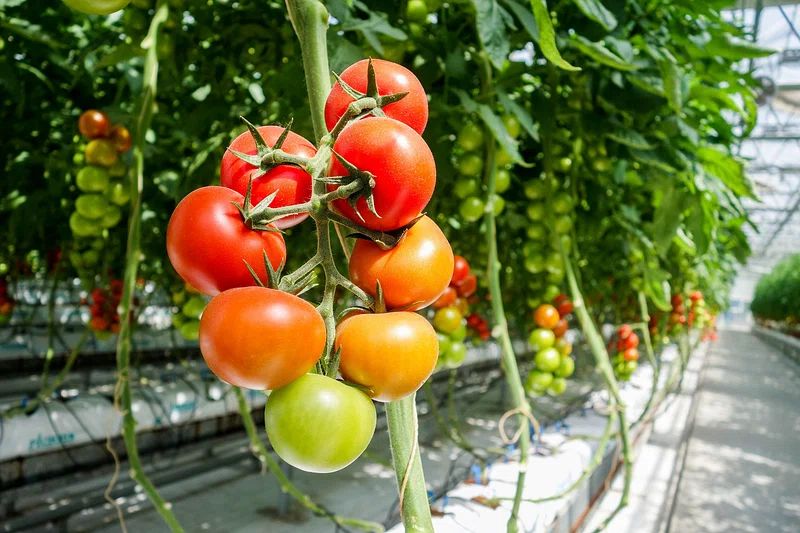
2. **Assess Your Site Thoroughly**With your vision firmly in mind, the next critical step is to thoroughly assess the chosen site for your garden. This comprehensive evaluation ensures that the environment can support your desired plants and design, preventing future frustrations and costly corrections. Understanding the nuances of your specific location is paramount for long-term success, as plants thrive best when their fundamental needs for light, water, and soil are precisely met.
Dedicate a day or two to meticulously observing the area, noting how many hours of sun your potential garden beds receive each day. This is crucial for incorporating light-appropriate plants into your design. Begin early in the morning, around 8 or 9 AM, and continue observing throughout the day, taking pictures or notes at different times to identify which areas are bathed in sunlight and which remain in shade. You might even download a sun-tracking app on your smartphone, which can use your phone’s camera and GPS to estimate the amount of sun a specific area will receive with remarkable accuracy.
Remember that different plants have varying sunlight requirements: full-sun plants require at least 6 hours of direct sun, partial-shade plants need between 3 and 6 hours, and shade-tolerant plants benefit from 2 or 3 hours of direct light or from receiving indirect or filtered light all day. It’s also vital to consider how sunny spots can change significantly at different times of the year, as the sun’s angle shifts, so this seasonal variation must also be factored into your decision. Keep a close eye on trees, sheds, or other buildings that may cast shadows and block the sun, as their impact can change with the seasons.
Finally, conduct a soil test to evaluate the pH and nutrient levels in your garden area. Having nutrient-rich, well-draining soil is not just beneficial; it’s critical for healthy plant growth. Many local extension services offer testing kits, or you can easily purchase one online. Additionally, consider the topography: is your land in a low area prone to flooding, or on a hill that might dry out easily? Low areas might suggest a raised bed, while a drier, elevated spot could be ideal for an in-ground garden, especially if that hillside faces south in a northern area, maximizing sunlight exposure.
Read more about: How to Uncover a Used Car’s Past: A Consumer’s Guide to Identifying Former Rentals, Taxis, and Police Vehicles
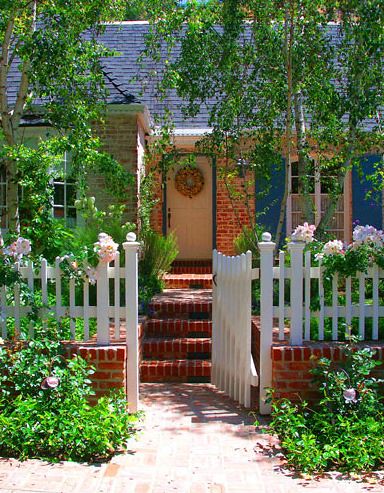
3. **Plan Your Garden Layout & Design**Once you’ve thoroughly assessed your site and clarified your vision, the exciting phase of planning your garden layout and design begins. This strategic step goes beyond mere aesthetics; a well-planned garden enhances beauty while simultaneously optimizing plant health, accessibility, and overall functionality. It’s about creating a harmonious landscape that integrates seamlessly with your home and lifestyle, drawing the eye and guiding movement through your green space.
Begin by sketching an overall picture of your entire yard, incorporating existing features like entertainment areas, your house, and other buildings. Enlarge this initial sketch and mark off permanent landscape elements such as existing trees, shrubs, and garden beds. Now, you can pencil in your proposed plantings, pathways, arbors, ponds, large containers, fountains, statuary, and garden benches. These elements not only add visual interest but also draw both foot traffic and attention through the garden, creating a sense of discovery and flow.
When designing your beds, make like a landscape professional and create extra-deep borders, large enough to house an array of low, medium, and tall plants. This layering technique helps carry the eye from earth to sky, anchoring borders with structural plants like trees or tall shrubs, then layering in climbing vines, smaller shrubs, varying-height perennials, and sprawling ground covers. Designing with ample depth also provides extra space to add more plants as the mood strikes, allowing for organic growth and seasonal adjustments without feeling cramped.
To ensure a realistic and precise plan, estimate the space you wish to dedicate to each planting bed and use these measurements to draw a blueprint to scale on graph paper. Crucially, consider plants’ mature sizes when penciling them in; this prevents overcrowding and gives you a realistic idea of how many you can fit into the space. On your plan, use markers, watercolors, or colored pencils to color in existing plantings and then your planned additions, ensuring that the old and new hues complement each other beautifully. The shape of your garden beds also plays a role in sunlight exposure; most garden beds, for optimal sun, should be rectangular, ideally four feet wide by eight feet long, running north and south so plants get maximum light without excessively shading each other.
Read more about: Legends of Asphalt: The Definitive Guide to the American Muscle Car, from the Iconic Pontiac Firebird to the Enduring Chevy Camaro

4. **Choose the Right Plants for Your Zone & Season**With your site assessed and layout designed, the next pivotal step is selecting the right plants. This decision is multifaceted, dependent not only on your personal preferences but critically on your local climate, specific gardening zone, and the timing of the seasons. Opting for plants that are naturally suited to your environment dramatically increases your chances of success, ensuring robust growth and minimizing maintenance.
First and foremost, it’s imperative to understand your gardening zone. A gardening zone essentially indicates the average lowest temperatures in your area, dictating which perennials can survive the winter outdoors. Certain perennials will simply die under colder temperatures, making them unsuitable for specific zones. For instance, northern zones, which experience cooler temperatures and less sunlight, are generally less ideal for warm-season plants like tomatoes and peppers unless you’re willing to start them indoors to extend their growing season.
Equally important are your frost dates for both the beginning and end of the growing season. Warm-season plants, such as tomatoes, cucumbers, and peppers, are particularly vulnerable and will perish with even a single frost. Knowing your average last spring frost date provides a guideline for when it’s safe to plant these delicate crops outdoors. Conversely, being aware of the average first fall frost date helps you gauge whether there’s enough time for certain crops to reach maturity before the cold arrives, enabling you to time your plantings effectively and protect vulnerable plants from an unseasonable chill.
When making your selections, consider starting with easy-to-grow options, especially if you’re a beginner. For vegetables, tomatoes thrive in fertile, sunny spots, while salad greens like lettuce or arugula are fast-growing and can be harvested multiple times. Herbs such as basil, cilantro, and mint complement vegetables and add flavor to your cooking. For ornamental beauty, incorporate a mix of perennials, which return year after year, such as daylilies, peonies, and hostas, alongside annuals like zinnias and marigolds for vibrant, seasonal bursts of color. Crucially, “forget the finicky” and opt for native plants or hardy and reliable varieties that are well-suited to your planting zone, ensuring they won’t need constant replacement down the road. Furthermore, remember to “consider every season” by slotting in plants with different bloom times to ensure a continuous succession of blossoms and visual interest throughout the year.
Read more about: Unleash Your Ultimate Outdoor Oasis: 14 Brilliant Backyard Landscaping Ideas That Will Make Your Neighbors Jealous (And Totally Chill)
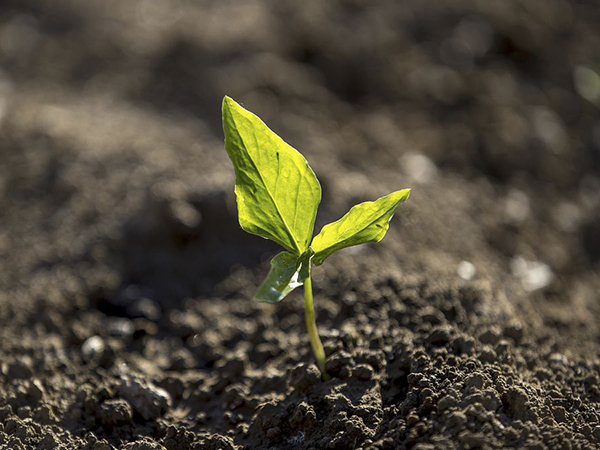
5. **Cultivate Healthy Soil**While sunlight and water are undeniably crucial components of a thriving garden, the health of your soil is the often-underestimated foundation upon which all success rests. Rich, living, and strong soil is not merely dirt; it is a complex ecosystem teeming with organisms that are indispensable for plant vitality. Neglecting soil health is akin to building a house on a weak foundation – it simply won’t endure or flourish. This step is about embracing methods that foster a vibrant underground world, ensuring your plants receive the optimal nutrients they need to grow robustly.
The cornerstone of healthy soil cultivation is to avoid tilling the garden. Tilling, a seemingly popular gardening method, actually destroys the intricate soil life that naturally works and enriches the earth. Healthy soil contains living organisms, including beneficial microbes and fungi, which not only add nutrients but also improve soil structure and aeration without mechanical intervention. Nature, as observed in forests, does not till its soil, yet everything grows fine. Rain naturally sifts organic material into the earth, and earthworms, often called “nature’s tillers,” tirelessly work to turn and mix the soil. Tilling by hand or machine can kill off these advantageous creatures, disrupting the delicate balance of the ecosystem you’re trying to build.
Achieving nutrient-rich soil involves combining essential ingredients and thoughtful amendments. Topsoil, the upper layer, is naturally rich in organic matter and forms the base. This should be generously supplemented with compost, which consists of broken-down organic materials that are unparalleled in their ability to enrich the soil, providing a slow-release, balanced diet for your plants. Mulch, too, plays a vital role in soil health, as it helps retain moisture, suppresses weeds, and eventually breaks down to contribute to the organic matter.
For further improvement, consider adding specific soil amendments. Organic fertilizers encourage healthy plant growth by feeding the soil, not just the plant, ensuring a sustained supply of nutrients. For areas with heavy clay soil, incorporating sand or perlite can significantly improve drainage and aeration, preventing waterlogging and promoting healthier root development. By consciously building and maintaining soil health, you empower your garden to thrive naturally, reducing the need for synthetic interventions and fostering a truly resilient ecosystem.
Read more about: Smart Savings, Beautiful Blooms: Your Ultimate Guide to Starting a Low-Cost Home Garden This Spring

6. **Master Mulching for Success**Among the most impactful, yet often underestimated, practices in successful home gardening is the consistent application of mulch. Far from being a mere aesthetic touch, mulch is a gardener’s gold, offering a multitude of benefits that mimic nature’s perfect design and significantly reduce the workload for the gardener. Always, always, always keep your soil covered with mulch; the only exception is immediately after planting certain seeds before they’ve sprouted. Once seedlings emerge and plants grow taller, mulch should be carefully moved back around them to fully cover the soil.
Mulching provides numerous benefits that directly contribute to a thriving garden ecosystem. Firstly, a thick layer of mulch helps the soil stay cooler and retain moisture more effectively because water evaporates much more slowly from a covered surface. This means watering is not necessary as often, conserving precious resources and saving you time and effort. Imagine walking through a natural woodland; the ground is perpetually covered in a rich tapestry of leaves, sticks, and other organic materials – this is nature’s own mulch, designed to create healthy, rich soil.
Secondly, a substantial layer of mulch acts as a highly effective weed suppressor. Weeds struggle to penetrate a thick mulch barrier, which means significantly less weeding for the gardener. Any weeds that do manage to push through are often easier to pull out due to the softer, moister soil beneath. This translates directly into less time spent on tedious tasks and more time enjoying the beauty and bounty of your garden. Furthermore, the organic material that comprises your mulch gradually breaks down over time, enriching the soil beneath and turning into valuable compost.
Finding mulch without spending a fortune is surprisingly easy. Common and effective choices include shredded leaves, wood chips, grass clippings, used coffee grounds, and ‘chop and drop’ trimmings from your own plants. Straw or hay are also popular options. Many of these materials can be found for free—don’t hesitate to ask neighbors and friends for their unwanted shredded leaves in the fall! Even if nothing is currently planted in a garden bed, it should still be covered with mulch. Every fall, after removing finished plants, adding one to two inches of compost and then covering it with as many shredded leaves as possible works wonders; come spring, you’ll be amazed at how many leaves have ‘disappeared,’ transformed into rich soil and compost for the next growing season.
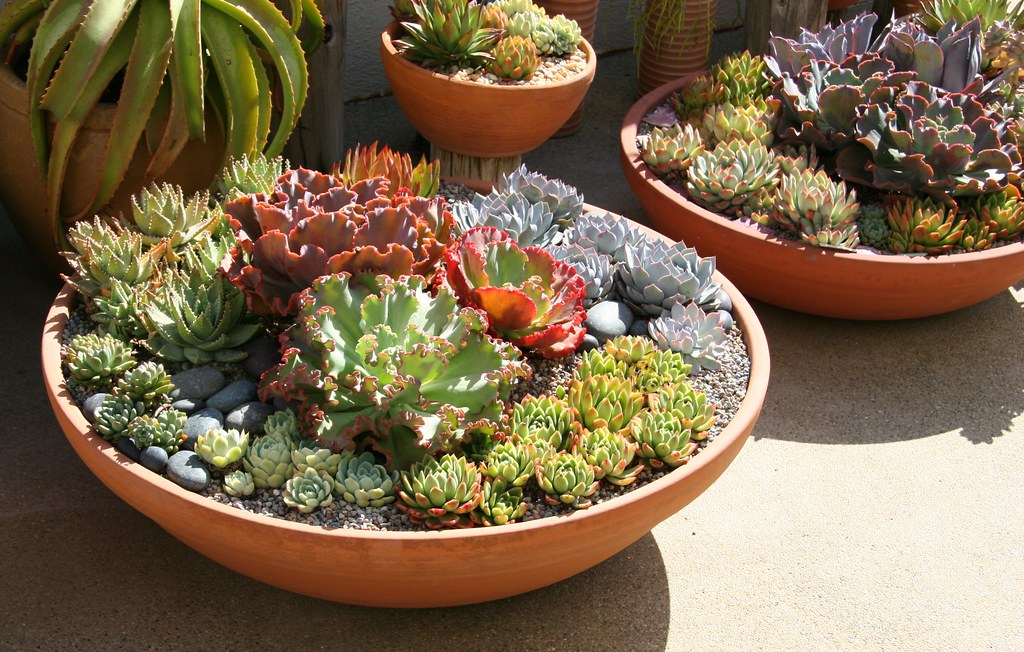
7. **Harness the Power of Composting**Continuing our journey into building a truly vibrant and self-sustaining garden, harnessing the power of composting stands as a cornerstone practice. It’s an eco-friendly, cost-effective, and incredibly powerful method for nourishing your soil and, by extension, your plants. Forget the notion that you need to spend money on synthetic fertilizers from the store; as we observe in nature, forests and wild landscapes thrive without human-applied chemicals. Their secret? Compost – the ultimate source of natural nutrients.
The fundamental difference between compost and synthetic fertilizers is crucial to understand: synthetic fertilizers often feed the plants directly but can deplete or even harm the soil life over time. Compost, conversely, feeds the soil itself. By enriching the soil with organic matter, compost cultivates a rich, healthy environment where beneficial microorganisms and earthworms flourish. It is this thriving, living soil that then naturally provides a comprehensive and balanced diet for your plants, ensuring their long-term health and vigor.
Making compost is remarkably easy and, perhaps best of all, entirely free! There are many different ways to approach composting, depending on your available space and preferences. Vermicomposting, for instance, involves feeding food scraps—like ground-up banana peels, orange peels, and apple cores—to worms in a worm bin, yielding nutrient-dense worm castings. For those short on space, a compost tumbler is an excellent option, allowing you to mix ‘brown’ (carbon-rich, like leaves) and ‘green’ (nitrogen-rich, like food scraps or grass clippings) materials to create compost efficiently.
For gardeners with more space, creating a traditional compost pile allows for larger quantities. My own method involves collecting shredded leaves (brown material) from lawn service companies or from neighbors who are happy to part with them. I also gather buckets of used coffee grounds from local coffee shops and save our family’s food scraps—banana peels, apple cores, orange peels—as primary sources of green material. Mixing all these materials together in a compost bin and piling them high in the fall results in beautiful, rich compost by the next year, all without spending a dime. Feed this homemade compost to your soil any time of the year, depending on the amount obtained; adding one to two inches to the top of the soil each fall, for example, allows nature to gently till it in, providing all the fertilizer your plants should need for the entire growing season ahead. It’s a testament to God’s perfect design: natural processes doing most of the work for us.”
, “_words_section1”: “1997
Building upon the robust foundation laid in the initial stages, the journey to a truly magnificent home garden continues with an emphasis on attentive ongoing care, thoughtful expansion, and smart, sustainable practices. Moving beyond the initial setup, these subsequent steps are designed to refine your gardening approach, ensuring long-term success, sustained beauty, and a deeply satisfying connection with your cultivated space. From mindful observation to strategic planning and resourcefulness, these advanced insights will empower you to nurture a garden that flourishes year after year, enriching your home and spirit. We delve into methods that not only maintain but enhance the vitality and aesthetic allure of your green haven, making gardening a truly rewarding and efficient endeavor.
Read more about: 12 Proven Gardening Secrets: How to Transform Your Yard into a Haven for Birds and Butterflies
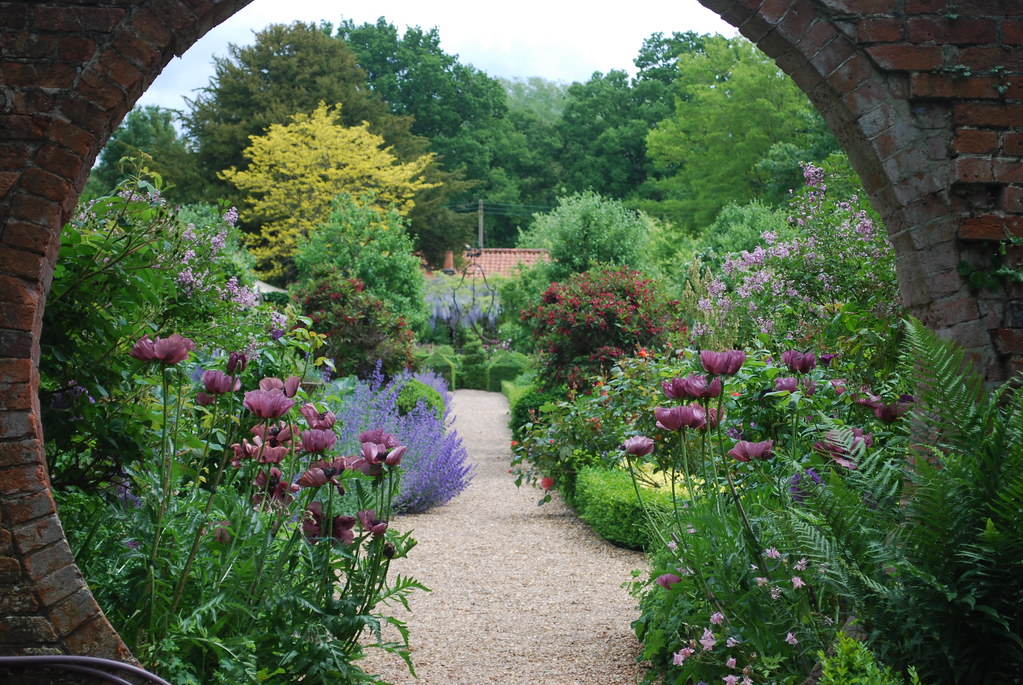
8. **Pay Attention to Your Plants**While many foundational steps set the stage for success, the ongoing relationship with your garden truly defines its vibrancy. Spending a few dedicated minutes each day walking through your garden is not just enjoyable; it’s an essential practice for maintaining its health and addressing potential issues before they escalate. Observe your plants closely at different times of the day, as their appearance can change, revealing subtle cues about their well-being.
This daily ritual allows you to become intimately familiar with your plants, detecting early signs of distress. Check the leaves for any discoloration, such as yellowing, droopiness, or brown spots, which can indicate nutrient deficiencies, disease, or watering issues. Look carefully for any unwanted visitors—bugs or their eggs—and remove them immediately to prevent infestations. Prompt action is key; proactive pest management, rather than reactive, keeps your plants vigorous and healthy without resorting to harsh chemicals.
Beyond just the plants, assess the soil around them. A continuous mulching practice, as previously discussed, significantly reduces weeds, but occasional persistent intruders may still emerge. Make it a habit to check for and easily pull any stray weeds before they compete with your precious plants for vital nutrients and moisture. Similarly, while mulching reduces the frequency of watering, it doesn’t eliminate the need entirely. Regularly check the top inch of soil; if it feels dry, it’s time to provide a drink. Being attuned to weather forecasts is also paramount: anticipate heatwaves to water more frequently, secure plants before a storm, and protect delicate specimens from unexpected frosts with a simple covering. These small, consistent efforts yield tremendous results, ensuring your garden thrives throughout the season.
Read more about: Diesel Durability Unveiled: 10 Engines That Redefine Longevity — And Those That Don’t
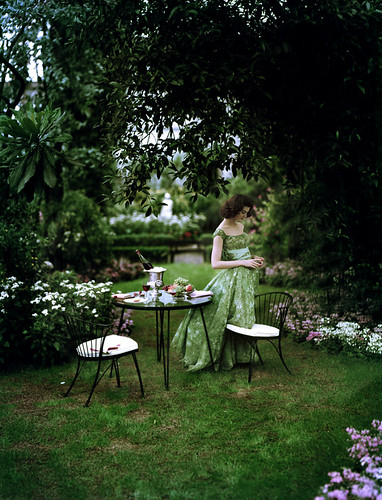
9. **Don’t Go Overboard!**One of the most common pitfalls for enthusiastic new gardeners is the temptation to overcommit. While the allure of abundant seed catalogs and nursery displays is strong, beginning your gardening journey with a simple, manageable scale is crucial for long-term enjoyment and success. Resist the urge to plant every appealing variety or cultivate an expansive bed right from the start, especially if you are new to gardening or establishing a fresh space.
Beginner gardeners can easily find themselves overwhelmed and even burnt out when the full extent of their ambitious plans comes to fruition. A small garden that flourishes successfully is far more rewarding than a large one that becomes a source of stress and neglected tasks. To foster a lasting love for gardening, it should be an enjoyable and fulfilling hobby, not a daunting chore. Keep your initial efforts contained and focused, allowing yourself to learn and adapt without feeling pressured.
As a wise rule of thumb, start modestly. Dedicate your efforts to just one garden bed or a few strategically chosen containers. Cultivate success with a select handful of your favorite plants—perhaps five or so varieties that you are genuinely excited to nurture. Once you’ve mastered this initial scale and gained confidence in your gardening abilities, you can mindfully and gradually expand in future years. This incremental approach ensures that each step of your gardening journey is met with success and satisfaction, building your expertise and allowing your green space to grow alongside your experience.
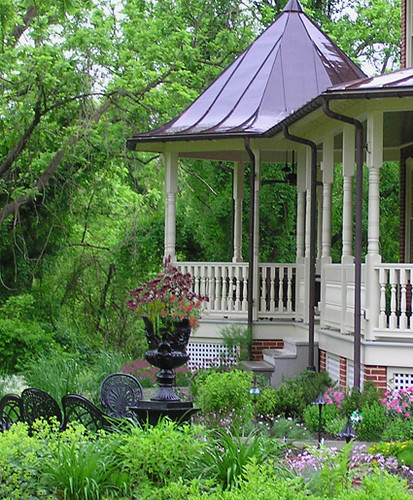
10. **Take Notes in a Gardening Journal**The cultivation of a truly exceptional garden is an ongoing process of learning, observation, and refinement. A gardening journal serves as an indispensable tool in this journey, transforming anecdotal experiences into valuable data that will enhance both your garden and your skills as a gardener year after year. It’s a testament to the fact that even the most seasoned green thumbs benefit from meticulous record-keeping.
Many gardeners find themselves struggling each spring to recall the specifics of the previous year’s successes, challenges, and experimental outcomes. A journal provides a tangible repository for these insights, acting as your personal gardening almanac. Documenting key details, from the date seeds were started and the specific seed starting mix used to the number of plants grown of each variety and the date seedlings were transplanted outdoors, creates a comprehensive history of your efforts.
Crucially, make note of how each plant performed throughout the season. Did a particular variety thrive, or did it encounter persistent problems like disease or pest issues? Were the flowers dropping, or was the yield lower than expected? Recording these observations, along with any ideas or questionable situations, allows you to objectively evaluate your methods. Each year, review these notes to learn from past experiences and adjust your strategies accordingly, perhaps experimenting with a new variety better suited for your zone or refining your care routine. Embracing this reflective practice fosters continuous improvement, transforming your garden into an ever-evolving masterpiece.
Read more about: Demystifying Land Measurement: Your Ultimate Guide to Acres and Square Feet, From History to Handy Conversions

11. **Mimic Nature by Companion Planting**Venturing into more advanced planting strategies, companion planting offers an elegant way to enhance your garden’s health and productivity by mimicking nature’s inherent wisdom. This concept involves strategically mixing certain plants together, creating synergistic relationships where they mutually benefit, much like a thriving natural ecosystem. While it’s a practice that offers profound advantages, beginner gardeners may choose to explore this concept after establishing foundational success to avoid feeling overwhelmed.
Observing natural landscapes reveals that plants rarely grow in perfectly segregated rows. Instead, seeds scatter wherever the wind carries them, resulting in diverse, intermingled communities where various species coexist harmoniously. Companion planting draws inspiration from this natural design, understanding that certain plant pairings can deter pests, attract beneficial insects, improve soil health, or even enhance the flavor and growth of neighboring crops. It’s an intelligent and organic approach to garden management.
Many companion planting strategies leverage the power of strong scents to naturally deter insects and pests. For instance, garlic and onions, with their pungent aromas, are excellent choices to intersperse among other plants; their compact size ensures they won’t shade out their companions. Incorporating various flowers, such as anise and marigolds, can also be highly effective in repelling specific insects and animals. Furthermore, many herbs, including basil, are known for their strong scents and can be strategically placed to benefit adjacent vegetables. However, exercise caution with invasive herbs like mint, lemon balm, and chamomile, which are best grown in containers placed strategically around your garden to prevent them from overtaking your beds while still allowing their beneficial properties to diffuse.
Read more about: 12 Proven Gardening Secrets: How to Transform Your Yard into a Haven for Birds and Butterflies

12. **Save Seeds!**For those ready to embrace a more holistic and self-sustaining gardening practice, seed saving represents a profound step. While it’s a more advanced technique, it is far from difficult and offers immense long-term benefits for your garden’s resilience and vitality. While purchasing inexpensive seeds remains a perfectly viable option, cultivating the habit of saving your own seeds from year to year can lead to stronger, more acclimated plants.
Consistently saving seeds from your healthiest, most robust plants helps them gradually adapt to your specific climate. Each generation subtly evolves, building enhanced defenses against local pests, diseases, and environmental fluctuations. This natural selection process means that over time, your saved seeds will yield plants that are inherently more resilient and better suited to thrive in your unique garden conditions, often requiring less intervention. It’s a remarkable testament to nature’s intelligent design.
The process of seed saving varies depending on the plant. For greens like kale, lettuce, onions, cilantro, and carrots, wait until the plants flower and produce mature seed pods. Once these pods have dried out completely on the plant, gently shake the seeds into a container, ensuring you collect them before the wind naturally disperses them. For fruit-bearing plants such as tomatoes and peppers, the approach differs: allow the fruit to become fully ripe, then carefully cut it open to extract the seeds. These seeds should then be thoroughly dried before being stored in a cool, dry place, ready to embark on their next growth cycle.
In the spirit of offering the “firstfruits” to ensure continued abundance, it is always recommended to save seeds from your healthiest and most productive plants or the largest, most vibrant fruits. This practice ensures that you are propagating the strongest genetic material, leading to better crops in successive seasons. This cyclical process of selecting and saving seeds not only perpetuates a legacy of strong plants but also deepens your connection to the rhythms of nature and the incredible, evolving intelligence of God’s perfect design.
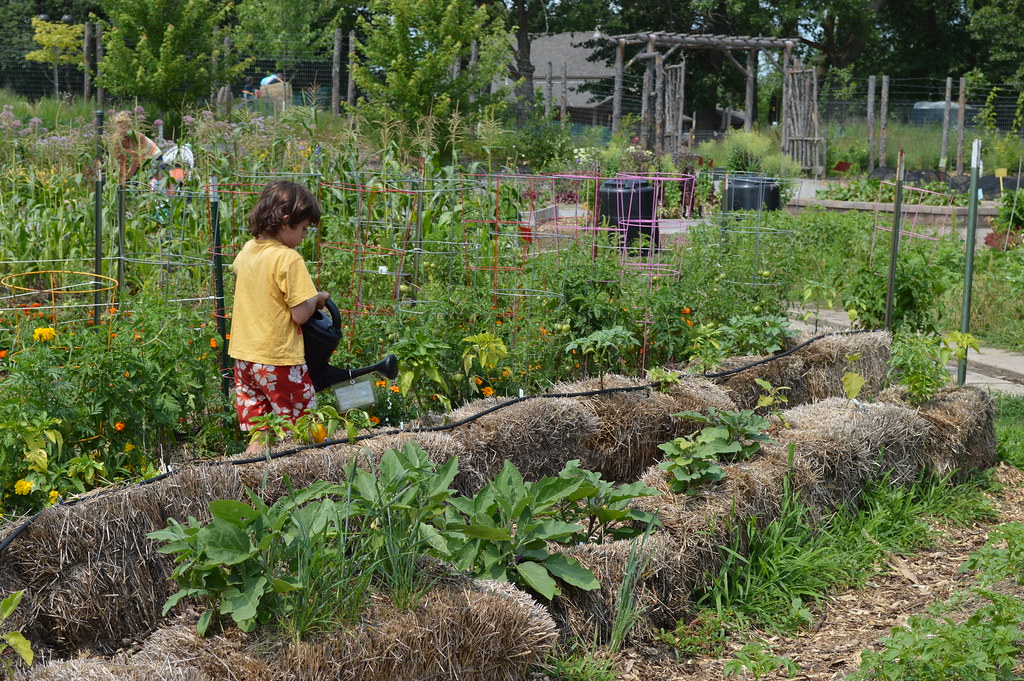
13. **Strategic Budgeting and Sourcing**Establishing a flourishing home garden doesn’t necessitate a lavish expenditure; with thoughtful planning and resourceful sourcing, you can create a beautiful and productive space without breaking the bank. A clear budget from the outset is a cornerstone of this approach, allowing you to prioritize investments and maximize value. This foresight enables a sustainable approach, ensuring your gardening dreams remain achievable over time.
Begin by determining a realistic budget for your current year’s plantings, mulch, and essential soil amendments. When financial resources are tight, a phased approach can be incredibly effective. Prioritize essential structural elements first, such as establishing pathways and acquiring larger, foundational plants like trees or tall shrubs. The remainder of your design can then be filled in gradually over several years, allowing you to spread costs and continually enhance your garden as resources permit.
Resourcefulness in sourcing plants and materials can lead to significant savings. Many spring garden catalogs, for instance, offer bare-root saplings of popular shrubs like forsythia, hydrangea, and redtwig dogwood at surprisingly inexpensive prices. While these stick-like, rooted plants require a few years to fully mature and bloom, their bargain-basement cost makes them ideal for mass planting or for creating repeating elements throughout a larger landscape without a substantial initial outlay. Furthermore, consider growing perennials from seed in a sunny corner; by mid to late summer, you’ll have a bounty of plants to fill your borders for pennies.
Beyond just plants, consider cost-saving methods for other garden essentials. Setting up raised beds for vegetables, herbs, and cutting gardens not only simplifies weeding but also saves money by providing fresh produce and cut flowers directly from your yard. And as discussed in Section 1, starting your garden from high-quality, inexpensive seeds—some companies offer packets for as little as 99 cents—is a superb alternative to pricier transplants. Embracing these smart sourcing and budgeting strategies transforms the perception of gardening from a costly hobby into an accessible and deeply satisfying endeavor.
Read more about: Behind the Impasse: 12 Core Budget and Contract Challenges That Strain Film Production Partnerships
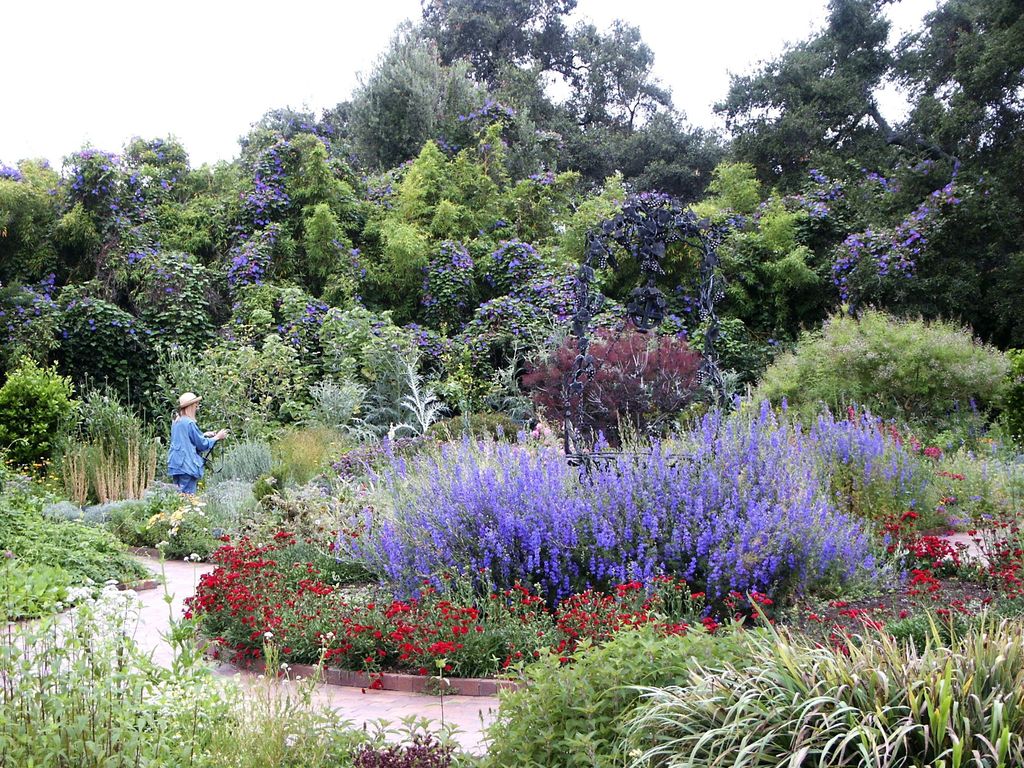
14. **Elevating Your Garden’s Aesthetic Appeal**While a garden’s primary function might be utility or tranquility, its visual impact plays a profound role in enhancing your home and lifting your spirits. Thoughtful aesthetic considerations elevate a collection of plants into a cohesive and captivating landscape, creating a space that is not only productive but also a true feast for the eyes. This stage of design is where your garden transforms into an artful extension of your personal style.
Begin by settling on a distinct style, whether you envision the precise symmetry of a clipped formal garden, the organic charm of a casual cottage appeal, or a native prairie celebrating local flora. Once a style is chosen, select a color palette. As expert gardener Joyce Corbett suggests, “Decide what colors you want in your garden ahead of time… Try using colors that are next to each other on the color wheel. They’re more likely to work well together visually.” This intentional approach prevents a hodgepodge of colors, creating a harmonious and visually pleasing scene that maintains cohesiveness even in moments of spontaneous plant acquisition.
Beyond blossoms, leverage the power of foliage for year-round interest. Sketch in plants with diverse leaf textures and colors—silver, gray, chartreuse, variegated, or bright-colored foliage—ensuring your garden remains vibrant even as flowers fade between seasons. Crucially, consider every season when slotting in plants with different bloom times; this ensures a continuous succession of blossoms and visual appeal throughout the entire year. To define spaces and add structural beauty, pencil in elements like trellises, hedges, or plant groupings that can camouflage unattractive views, create intimate garden rooms, or even buffer traffic noise, transforming functional needs into aesthetic assets.
Finally, don’t shy away from incorporating elements that truly enhance the “wow factor.” This might involve adding one or two striking plant groupings or shrubs strategically placed for curb appeal, drawing admiring glances from passersby. Consider larger, quick-growing plants such as Russian sage, fountain grass, or robust shrub roses like Carefree Delight to fill significant space with lush beauty without overspending. By thoughtfully combining color, texture, structural elements, and year-round interest, you can cultivate a garden that is not merely a collection of plants, but a dynamic, living artwork, perfectly reflecting your aspirations and enhancing the beauty of your home. It’s about creating an outdoor sanctuary that consistently delights and inspires, a true testament to the power of deliberate design.
Read more about: Reclaim Your Haven: 14 Surprising Yard Attractants That Invite Snakes and How to Send Them Packing
Cultivating a home garden is a profoundly rewarding journey, one that offers not just fresh produce and vibrant beauty, but also a peaceful retreat and a deep connection to the natural world. By embracing these 14 simple yet powerful steps, from the initial spark of vision to the ongoing attentive care and mindful expansion, you are equipped to create a garden that thrives. Remember, the true essence of gardening lies in the journey—the continuous learning, the joyous discovery, and the immense satisfaction of nurturing life with your own hands. So step out, dig in, and let your personal Eden flourish, reflecting the perfect design of nature in every leaf and bloom.



